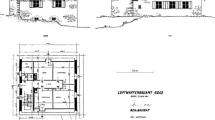Résumé
Les 4 satellites galiléens de Jupiter ont été observés fréquemment depuis 20 ans avec les télescopes à haute résolution du Pic-du-Midi. Des configurations permanentes ont été vues et photographiées à leur surface. Elles ont fait l’objet de cartes-planisphères. Leur identification prouve que les périodes de rotation sont synchrones avec les périodes de révolution pour chacun des 4 satellites, avec un axe de rotation perpendiculaire au plan des orbites dans la limite de la précision des mesures. Les passages des satellites devant le disque de Jupiter donnent une méthode simple pour déterminer les contrastes et les albedos des différentes taches observées sur les satellites. Pour Callisto, les albedos pour l’angle de phase 5° couvrent le domaine de 0,19 à 0,09, le contraste est entre les différentes régions valant 0,5; ces valeurs indiquent une surface de type lunaire, bien que la faible densité entraîne une structure interne différente. Pour Europe, les albedos très élevés sont compris entre 0,73 et 0,52 avec un faible contraste de 0,3, tout à fait compatible avec un dépôt de neige ou de givre, l’observation spectroscopique indiquant la présence de l’eau. Pour Ganymède, les contrastes très élevés peuvent atteindre 0,7 et les albedos s’étendent de 0,5 à 0,15; des grandes étendues de neige sur un sol du type de Callisto rendraient compte de ces valeurs. lo a un albedo très élevé de 0,83 dans la région équatoriale, mais de 0,46 au voisinage des deux pôles assombris; la couleur jaune et l’absence des bandes de H2O dans le spectre indiquent une surface de composition différente.
Abstract
The four Galilean satellites of Jupiter have been observed frequently during the past 20 years with the high resolution telescopes of Pic-du-Midi. Reliable features are seen and photographed at their surface. They have been mapped on planispheres. Their identification proves that the rotation period is synchronous with the revolution for each satellite, with an axis not significantly departing from the normal to the orbital plane. The transits of satellites in front of the limb-darkened Jupiter disk provide a technique for accurate contrast and albedo determinations of the features observed. For Callisto, the albedos at 5° phase angle range from 0.19 to 0.09 with a contrast 0.5, indicating a lunar type surface, despite the low density involving a different internal structure. For Europa, the albedos are very high, between 0.73 and 0.52, with low contrasts of 0.3, readily explainable by a snow or frost deposit, the spectroscopic evidence indicating water. For Ganymedes, the very high contrasts reach 0.7, and albedos span from 0.50 to 0.15; patches of snow on Callisto-type terrains are suggested. Io has very high albedos of 0.83 for the equatorial zone to 0.46 for the two darkened poles; the yellow color and absence of H2O bands in the spectrum indicate a special surface composition.
Access this chapter
Tax calculation will be finalised at checkout
Purchases are for personal use only
Preview
Unable to display preview. Download preview PDF.
Similar content being viewed by others
Bibliographie
Camichel, H., Gentili, M., et Lyot, B.: 1943, Astronomie 57, 49.
Danjon, A.: 1944, Astronomie 58, 33.
De Vaucouleurs, G.: 1970, dans A. Dollfus (éd.), Surfaces and Interiors of Planets and Satellites, Academic Press, Chap. 5, p. 225.
Dollfus, A.: 1957a, Compt. Rend. Acad. Sci. Paris 244, 162.
Dollfus, A.: 1957b, Compt. Rend. Acad. Sci. Paris 244, 1458.
Dollfus, A.: 1965, Ann. Astrophys. 28, 722.
Focas, J. H.: 1958, Compt. Rend. Acad. Sci. Paris 246, 1665.
Harris, D. C.: 1961, dans G. P. Kuiper et B. H. Middlehurst (eds.), Planets and Satellites, Univ. Chicago Press, p. 272.
Kuiper, G. P.: 1972, Comm. Lunar Planet. Lab. 9, No. 172, 218.
Lyot, B.: 1953, Astronomie 67, 3.
Morrison, D.: 1973, Icarus 19, 1.
Stebbins, J. et Jacobsen: 1962, Lick Obs. Bull., No. 401; cf. A. Dollfus dans Handbuch der Physik 54, p. 218.
Wamsteker, W.: 1972, Comm. Lunar Planet. Lab., No. 167.
Author information
Authors and Affiliations
Editor information
Editors and Affiliations
Rights and permissions
Copyright information
© 1974 IAU
About this chapter
Cite this chapter
Dollfus, A., Murray, J.B. (1974). La Rotation, La Cartographie et La Photometrie des Satellites de Jupiter. In: Woszczyk, A., Iwaniszewska, C. (eds) Exploration of the Planetary System. International Astronomical Union/Union Astronomique Internationale, vol 65. Springer, Dordrecht. https://doi.org/10.1007/978-94-010-2206-4_46
Download citation
DOI: https://doi.org/10.1007/978-94-010-2206-4_46
Publisher Name: Springer, Dordrecht
Print ISBN: 978-90-277-0450-4
Online ISBN: 978-94-010-2206-4
eBook Packages: Springer Book Archive




